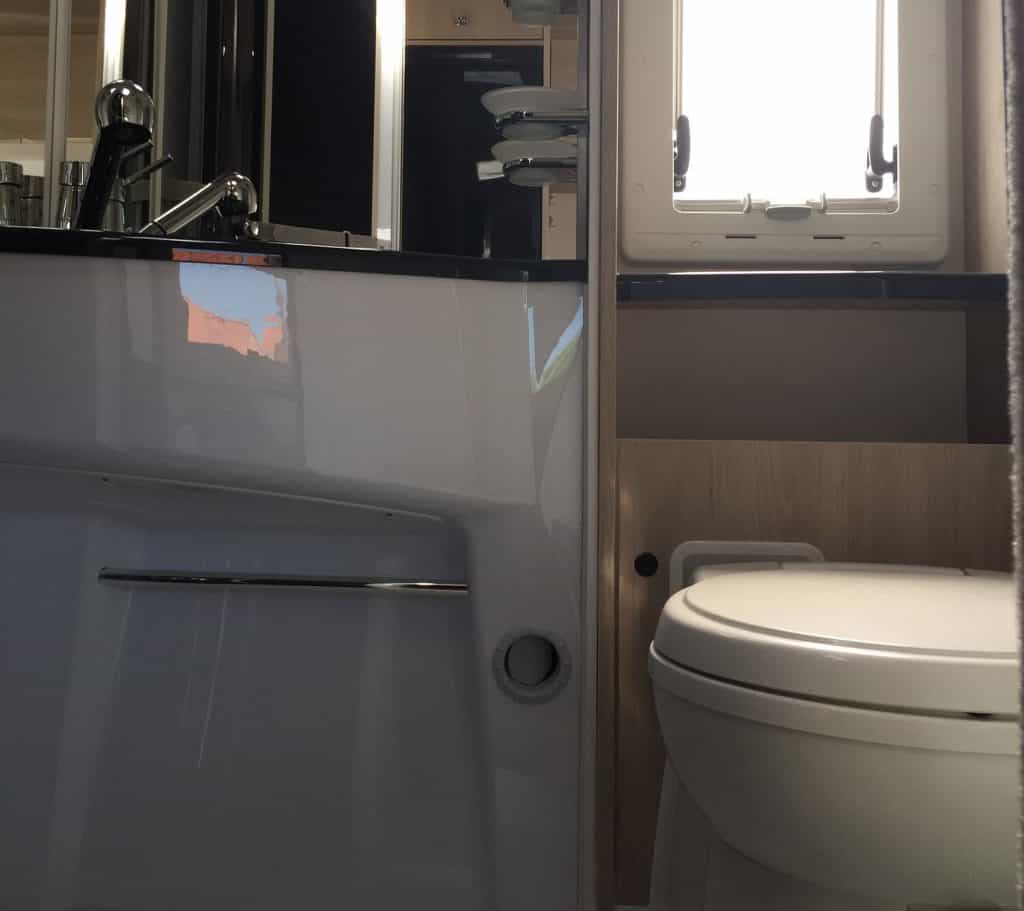Lots of our lovely customers who have hired motorhomes from us over the last 5 years, were new to motorhomes when they started. Looking for an alternative staycation was often the starting point, but so many people have found they love motorhoming and discovering great places around the UK.

So if the freedom to explore or create your own epic road trip sounds like it could be for you, here’s our quick guide to motorhome basics for motorhome beginners.
What powers a motorhome?

You can have a mains connection ‘hook up’ on a campsite or at someone’s home (wherever you can plug-in with an adapter provided). This will power lights, 3-pin sockets and appliances.
When you can’t access mains power, an extra battery called a leisure battery can provide power for lights, pumps, TV and small 12v appliances. This will only last so long, but the battery gets recharged whenever you’re driving and when you connect to a mains supply.
An on-board propane gas cylinder provides the gas for cooking, and can also run the fridge and heat water when you don’t have mains electricity.
For keeping the motorhome warm on chilly nights, motorhomes have various heating options, this can be gas, electricity or sometimes diesel (from the main tank, there’s no need to fill a separate tank). If you’re going to be on a campsite with hook up, my tip would be to bring a small plug-in electric fan heater, because there’s no extra charge however much electricity you use.
How do I get water in a motorhome?

Most motorhomes have onboard water and waste tanks (all our motorhomes have these) so you don’t need to be connected to a water supply to use water. Just use a hose (we supply these) to fill the tank. You can fill up before you leave home, but usually it’s better to fill up when you reach your campsite so you’re not wasting fuel by transporting water. Just remember to fill up when you first get to your campsite; a common mistake is getting perfectly pitched facing a beautiful view or sunset, then remembering you have to move the motorhome to get water (I speak from experience on this one). Motorhomes have a pump that pumps water to your taps, shower and toilet (the pump runs on the leisure battery if you’re not connected to a power supply).
Waste water from your sinks and shower will go into waste water tanks on the motorhome. Most campsites have motorhome service points that you can simply drive onto and open a valve to empty the waste tanks.
How does the toilet work?

Onboard water tanks and pumps mean you can flush the toilet like a normal toilet. The main difference is where the waste goes – open a flap and it goes into a sealed cassette underneath. The waste is sealed away (a toilet chemical helped to stop smells).
You will need to empty the cassette, in our motorhomes there’s an indicator light to let you know when you need to do this. Most campsites have chemical toilet disposal points specifically designed for emptying the toilet cassette. The only thing we can’t help you with is the debate on who gets the job of emptying the cassette (but I do know who usually wins).
Can you watch TV in a motorhome?

Yes, you can watch a TV in a motorhome, all our motorhomes have TV and DVD players. Remember you’ll probably need to retune the TV when you move to a new place. There’s a booster ariel to help you get a signal, but there are some remote places where you just can’t get a good TV signal. So if you’re heading somewhere remote, think about bringing a few of your favourite DVDs.
When you’re not connected to an electricity supply, using the TV a lot can drain your leisure battery, but you’re probably not going on holiday to spend hours watching TV. Lots of people come back saying they never even turned the TV on, a sign of a great holiday.
Driving a motorhome

Driving a motorhome is not that different from driving a big van, in fact, our motorhomes are built on van chassis. But an important difference to remember is that the body of the motorhome is wider than the cab, which can be deceptive when you’re driving. Think of your wing mirrors as the width of your motorhome. Make sure you know the size of your motorhome, particularly the height and think about low bridges when planning your route.
A motorhome has a longer wheelbase than a car so you’ll need to take a wider angle when you’re turning. A rear-view mirror is no use (except if you want to keep an eye on people in the back) so get used to using your wing mirrors to check what’s behind you and where the back end of the motorhome is.
Motorhome safety tips

Always make sure your gas is turned off at the cylinder when you’re travelling, it’s a legal requirement.
When you’re using a hook-up cable to connect to electricity, always unwind it completely. Cables used wound up on reels can get very hot and in extreme cases melt or even catch fire.
It might seem obvious but all passengers in a motorhome need to be seated with a seat belt on while you’re moving, just like in a car. You’ve got your own toilet facilities with you, but if someone needs to use the toilet, pull over somewhere safe.
We’ve helped guide lots of people through their first time in a motorhome, and many come back again and again. I have to admit to not being a ‘natural camper’ tents are not for me, motorhomes give me the same freedom to enjoy the outdoors, but in comfort and it’s easy to move on whenever you like.
If you’ve never done it, try it!
The Camping and Caravanning Club have lots of useful resources for motorhome beginners, view information